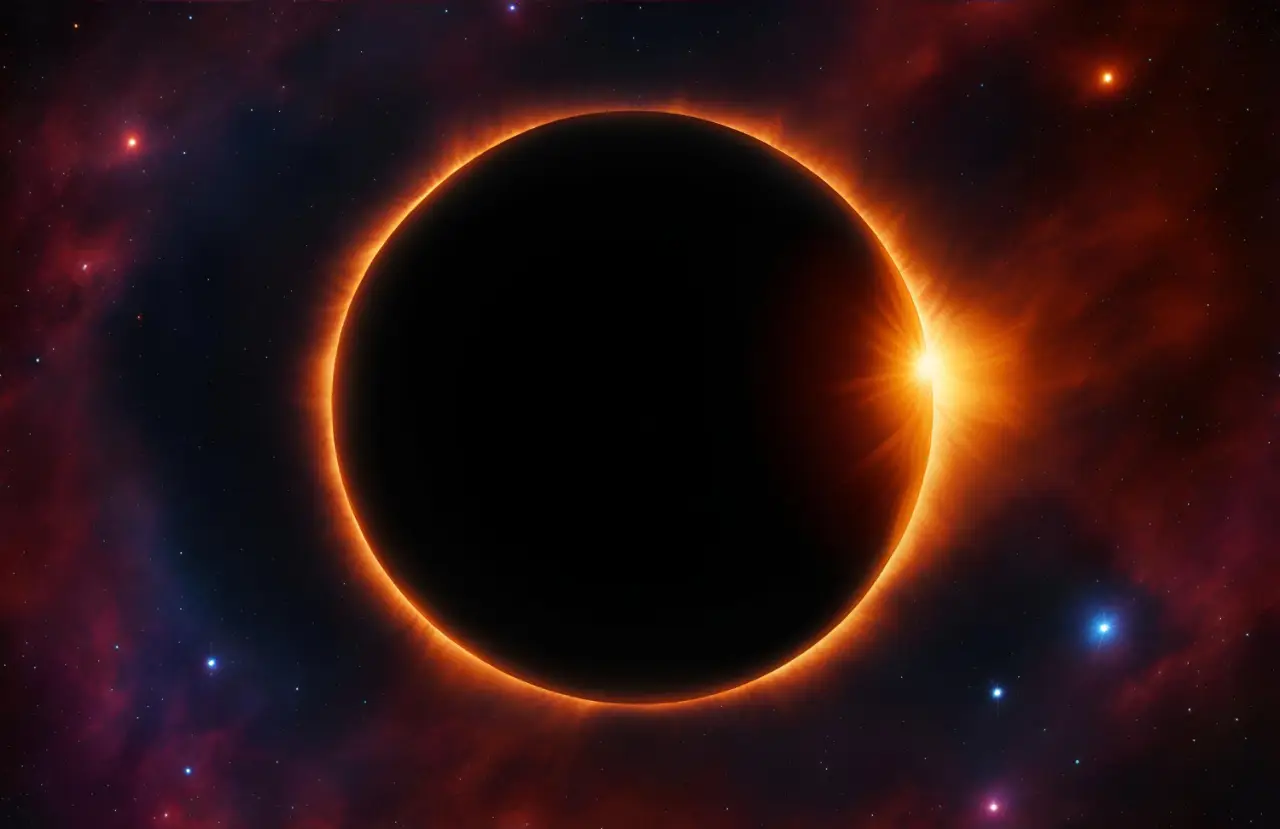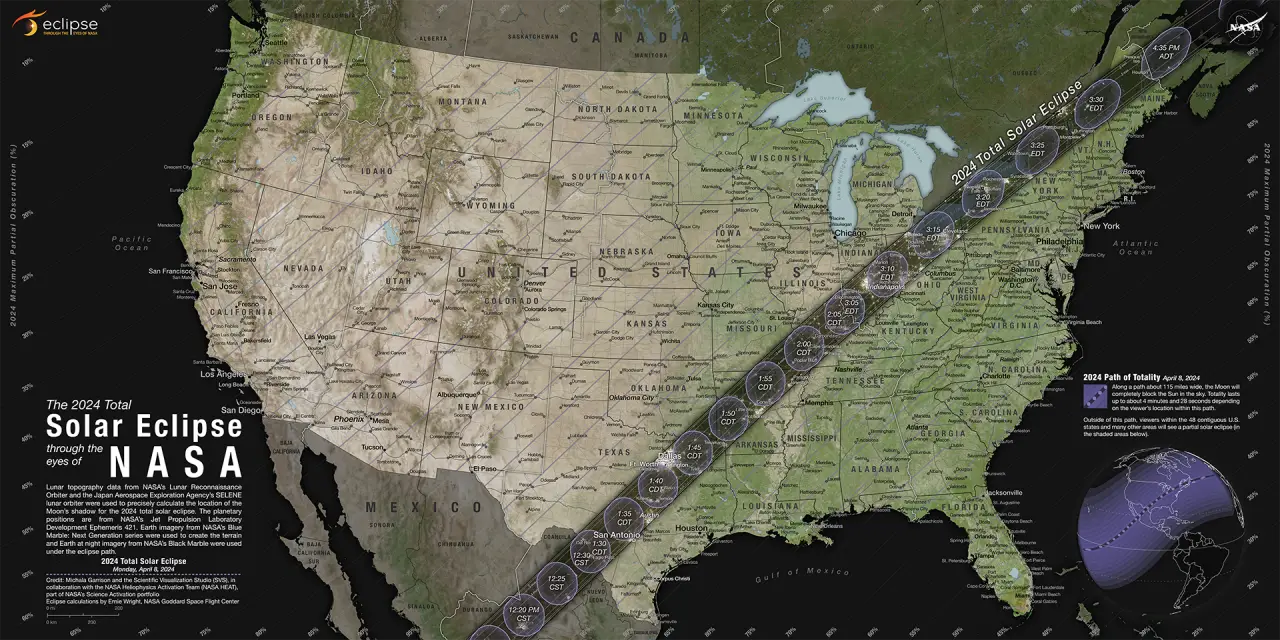The total solar eclipse set for April 8, 2024, is generating buzz among astronomy enthusiasts and casual observers alike.
As one of the year’s most significant astronomical events, it will cast a shadow over parts of the US, Mexico, and Canada, offering a rare spectacle for millions.
Why This Eclipse is Unmissable?
The eclipse is remarkable for the duration and breadth of its path of totality, where the moon completely obscures the sun, revealing the solar corona.
According to NASA, after the total solar eclipse on April 8, 2024, the next total solar eclipse that can be seen from the contiguous U.S. will be on Aug. 23, 2044.
Traversing the Path of Totality
An estimated 31 million people reside within the eclipse’s path of totality, a 190-kilometer-wide stretch where the eclipse’s effects are fully visible.
The duration of the total eclipse will vary, reaching up to 4 minutes and 28 seconds for those near the centerline, making locations like Mazatlán, Dallas, Indianapolis, and Montréal prime spots for observation.
Total Solar Eclipse Viewing Opportunities in Europe
While the eclipse’s path of totality is confined to North America, parts of Europe will witness a partial eclipse.
Observers in Ireland and the UK may see a partial eclipse before sunset, with conditions permitting.
The west coast of Ireland is poised for the longest viewing duration, offering a glimpse of the eclipse to cities across both countries. Those living in and near the cities of Cork, Limerick, Galway, and Dublin in Ireland, and Belfast, Manchester, Liverpool, Inverness Glasgow, and Edinburgh in the UK, will likely get some visibility from higher ground and with clear skies.
For Europeans, the partial eclipse is expected to start at 8.52 pm CET and end at 9.51 pm CET.
Safely Watching the Eclipse
For those in North America, eclipse glasses are essential to safely enjoy the event, except during the brief totality phase.
Meanwhile, Europeans looking forward to the partial eclipse should also use protective eyewear.
Regardless of location, viewing the eclipse without proper protection can cause serious eye damage.
Digital Viewing Options
For those unable to witness the eclipse in person due to geographic constraints or unfavorable weather, digital viewing offers a convenient alternative. NASA plans to livestream solar eclipse, providing telescope views and expert commentary, making the eclipse accessible worldwide.
Tune in to the official NASA broadcast at 1 p.m. EDT (1700 UTC) for live views from the eclipse path, expert commentary, and live demonstrations.
Special Eclipse Viewing Flights
In a historic first, airlines like Delta, Southwest, and United are offering special flights aligned with the eclipse’s path of totality. These flights promise passengers a unique vantage point from the skies, enhancing the viewing experience of this astronomical event.
The total solar eclipse of 2024 is more than just an astronomical event; it’s a unifying spectacle that invites observers from around the globe to look up in wonder. Whether watching from the path of totality, experiencing a partial view in Europe, or tuning in online, the 2024 eclipse is a celestial event not to be missed.















